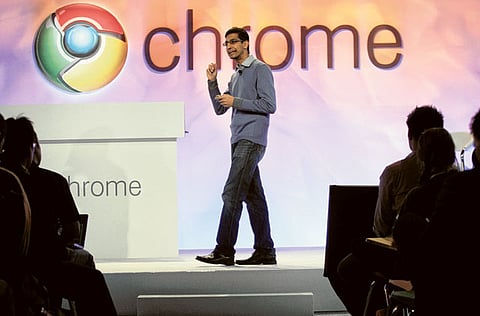Why Google apologised to Chrome users
Recently, Google left thousands of computers with blank Chrome browsers

Blank white screens in Google Chrome, the tech giant's popular browsers, left many IT administrators and users confused recently.
What happened?
It turned out that Google did a silent "experimental" change.
This left users accessing Chrome through virtual machine environments — like Citrix — bewildered as they kept seeing white screens on open Chrome tabs.
This blocked access to the browser, leaving it totally unresponsive.
The Verge, a multimedia content platform, reported that the experiment left many IT administrators in a tizzy, too. Many businesses typically manage and control Chrome updates.
Behavoiur changed
Google later revealed it had launched an “experiment” on stable versions of Chrome. It admitted them that this changed the browser’s behaviour.
The experiment was made "quietly", without IT administrators or users being warned beforehand.
Google had simply flipped the switch on a flag to enable a new "WebContents Occlusion" feature that’s designed to suspend Chrome tabs when you move other apps on top of them and reduce resource usage when the browser isn’t in use.
“The experiment / flag has been on in beta for ~5 months,” explained David Bienvenu, a software engineer at Google, in a Chromium bug thread.
“It was turned on for stable (e.g., m77, m78) via an experiment that was pushed to released Chrome Tuesday (November 12) morning. Prior to that, it had been on for about one percent of M77 and M78 users for a month with no reports of issues, unfortunately.”
Late on Thursday night (November 14), after reports from businesses with thousands of users affected, Google rolled back the change.
“I’ll rollback the launch of this experiment and try to figure out how to deal with Citrix,” noted Bienvenu in the bug thread.
Testing, rollout
In a statement to The Verge, Google confirmed the testing and rollout of this feature. They also apologised for the issues caused:
Google's apology
“After the rollout, we received reports that in some virtual environments, Chrome on Windows displays a blank page, which may be because Chrome mistakenly believes it’s covered by another window. As soon as we confirmed the reports, the feature was disabled. "If Chrome on Windows is displaying blank pages, restart Chrome. On the next start, this feature will be disabled. We also want to provide an explanation of how this change was rolled out. For some features, Chrome uses a gradual rollout process that happens more slowly than the main rollout. This allows us to quickly revert a change if we discover a bug that wasn’t uncovered in prior testing. Once we received reports of the problem, we were able to revert it immediately. We sincerely apologize for the disruption this caused.”
Sign up for the Daily Briefing
Get the latest news and updates straight to your inbox








